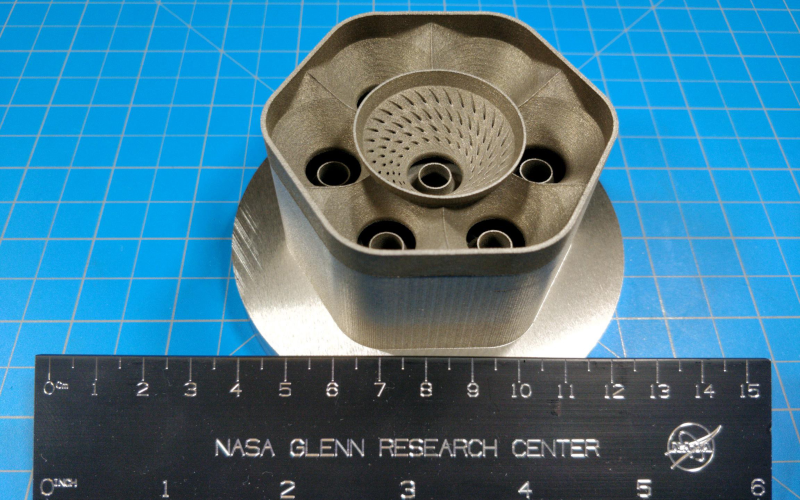
NASA 3D printed alloy designed for harsh aerospace applications
By DE staff
Additive Manufacturing Metal FabricationGRX-810 alloy exhibits 1,000 times the durability under stress at high temperatures vs modern alloys.

This turbine engine combustor (fuel-air mixer) is one example of complex components that can benefit from applying its new additive manufacturing GRX-810 alloys, the space agency says.
(Photo credit: NASA)
According to the space agency, it’s oxide dispersion strengthened (ODS) GRX-810 alloy exhibits twice the resistance to fracturing, three and a half times the flexibility and more than 1,000 times the durability of state-of-the-art alloys, at temperatures over 2,000°F (1093.3°C).
To develop the alloy, NASA says its researchers used computational thermodynamic modeling to run simulations to optimize alloy compositions, rather than employing costly and time-consuming traditional trial-and-error processes. The tool also avoids dead ends, the agency says, by showing researchers not just what metal types to incorporate but how much of each element to infuse into the composition.
Researchers then used 3D printing to uniformly disperse nanoscale oxides throughout the alloy, which provided its improved high-temperature properties and durable performance. When used in a jet engine, for example, NASA says the alloy’s higher temperature and increased durability capability translates into reduced fuel burn and lower operating and maintenance costs. It also allows engine part designers to contemplate tradeoffs they couldn’t consider before, without sacrificing performance.
“This breakthrough is revolutionary for materials development,” said Dale Hopkins, deputy project manager of NASA’s Transformational Tools and Technologies project. “New types of stronger and more lightweight materials play a key role as NASA aims to change the future of flight. Previously, an increase in tensile strength usually lowered a material’s ability to stretch and bend before breaking, which is why our new alloy is remarkable.”
www.nasa.gov
